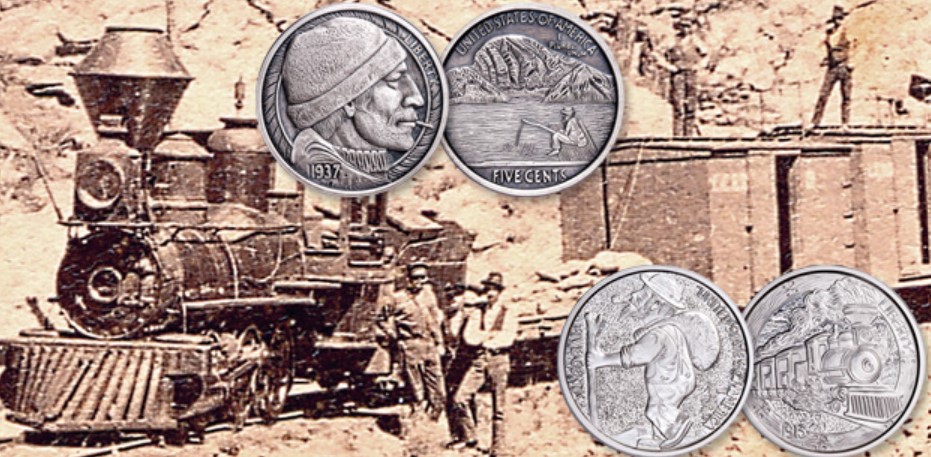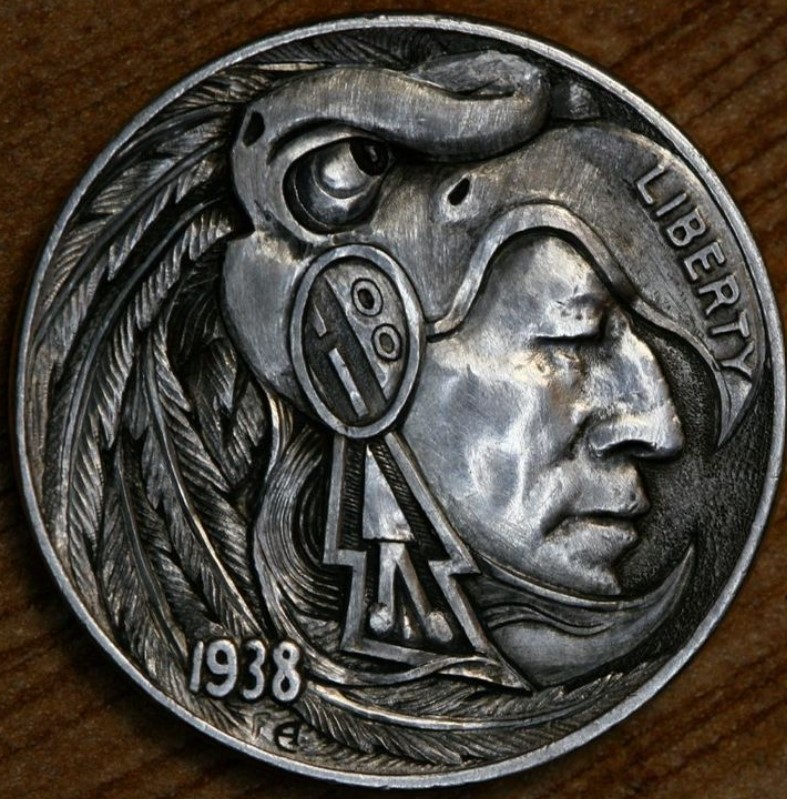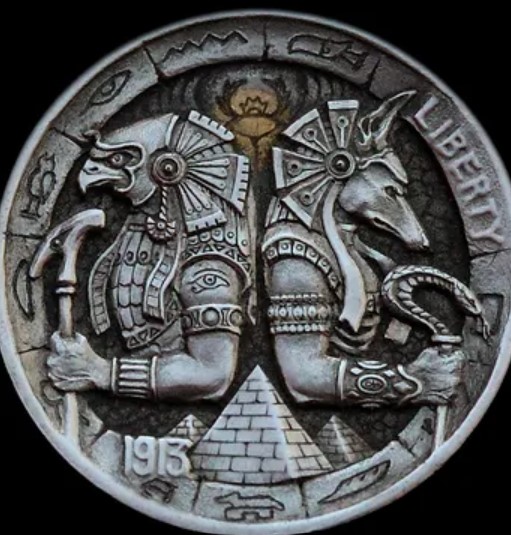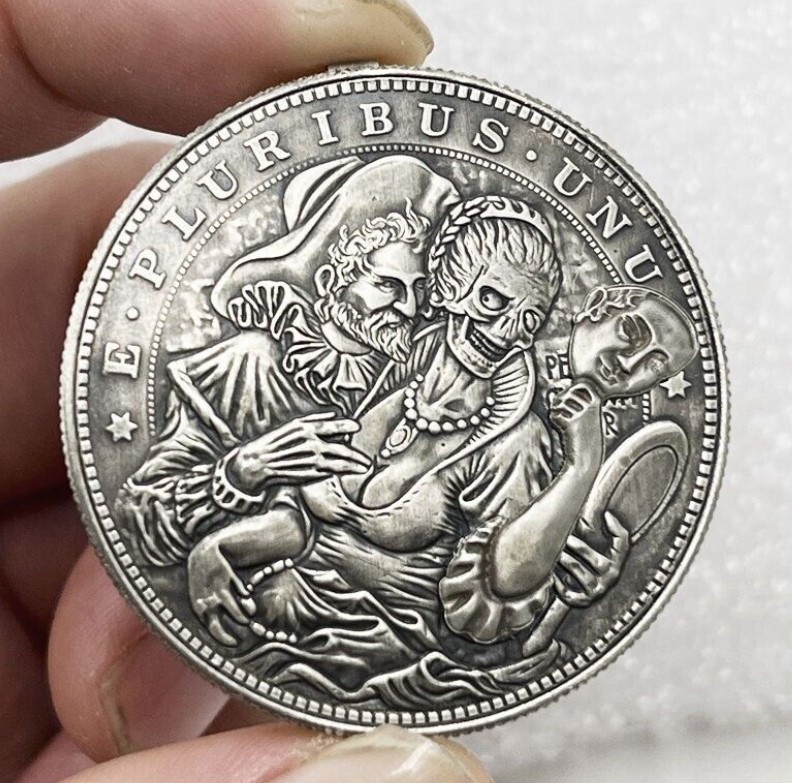What Are Hobo Nickels?
Hobo Nickels are hand-engraved American nickel coins that were modified by homeless people during the Great Depression era. These coins, originally worth just five cents, became small canvases for artistic expression and a form of currency in the barter system. The practice of engraving coins dates back to the early 20th century but became especially prevalent during the 1930s.

Origins of the Hobo Nickel
The term “Hobo Nickel” was coined due to the association with the transient lifestyle of homeless individuals during the Great Depression. Hobos would travel from town to town, and many would use these engraved coins as a form of trade. They would carve intricate designs on the coins, making them more valuable than their face value and allowing them to use the artwork for necessities like food, rides, or shelter.
Craftsmanship Behind the Engravings
Each Hobo Nickel was hand-engraved, often using rudimentary tools such as knives, files, or nails. These hobos displayed remarkable craftsmanship, transforming a simple nickel into a work of art. The engravings varied widely, with some depicting portraits, animals, or even intricate designs of skulls and skeletons, like the one in the image you see. The engravings were meticulously detailed, and the creativity behind them was unmatched for the time.

Hobo Nickels as a Form of Barter
Beyond being an artistic endeavor, Hobo Nickels served as a practical means of survival. Since the Great Depression made life difficult for many Americans, hobos needed ways to acquire basic resources without using traditional currency. By exchanging their coin art, hobos could gain the things they needed to survive, such as food, transportation, and other essential services.
Popular Motifs in Hobo Nickel Art
One of the most fascinating aspects of Hobo Nickels is the variety of motifs and themes that appear in the engravings. Each piece is a reflection of the artist’s imagination and a commentary on the times. While the designs were diverse, certain motifs were more common than others, providing insight into the culture and mindset of the creators.
Skull and Skeleton Designs
As seen in the image you shared, skulls and skeletons were a recurring theme in Hobo Nickel engravings. These macabre designs are thought to represent death, survival, or the hardships of life during the Great Depression. The motif of the skull often conveyed a sense of defiance, rebellion, and the struggle to survive in a harsh world.
Animal and Human Figures
In addition to skulls, Hobo Nickels often featured animals and human figures. These could range from intricate representations of wildlife to more abstract human forms. These motifs likely represented the personal experiences and challenges that hobos faced during their travels. Some engravings also included portraits of women or iconic figures from popular culture.

Political and Social Messages
Many Hobo Nickels contained political or social commentary, reflecting the frustrations and hopes of the homeless during the Great Depression. Some designs portrayed images of politicians or caricatures of the wealthy, perhaps as a subtle protest against the economic disparity of the time. These coins became more than just currency; they became small, portable protests and reflections of the hobos’ perspectives.
Hobo Nickels in the Modern Day
Today, Hobo Nickels have become a sought-after collector’s item, prized for their historical significance and the intricate craftsmanship that went into creating them. Some pieces have been sold at auctions for thousands of dollars, far exceeding their original face value. Collectors and numismatists value these coins not only for their rarity but also for the unique glimpse they provide into a turbulent period in American history.

The Collector’s Market for Hobo Nickels
The market for Hobo Nickels has grown in recent years, with collectors seeking out rare and unique pieces. Because of their handmade nature, no two Hobo Nickels are exactly alike, which makes them especially desirable to collectors. The value of a Hobo Nickel can vary based on its rarity, condition, and the intricacy of its design. Pieces with more detailed engravings or famous motifs, such as the skull designs, tend to fetch higher prices.
Hobo Nickel Artists and Modern Reproduction
While most Hobo Nickels were created by anonymous homeless individuals, some engravers have gained recognition for their work. One notable figure is George Washington “Slim” D. (the most well-known engraver), who crafted numerous coins during the 1930s. Modern engravers have also revived the art form, creating new Hobo Nickels with updated designs. These modern pieces are often collected alongside their historic counterparts, adding to the continued fascination with this unique form of folk art.

Preserving the Legacy of Hobo Nickels
As interest in Hobo Nickels continues to grow, it is important to preserve these coins as part of America’s cultural and artistic heritage. Museums, collectors, and numismatists are dedicated to conserving these coins to ensure that future generations can learn about the struggles, creativity, and resilience of the people who created them. Hobo Nickels are more than just coins—they are a window into a bygone era.
Conclusion
The Hobo Nickel is a remarkable artifact that tells the story of creativity and survival during one of the most challenging periods in American history. These small, hand-carved coins not only provided a means of trade but also served as a form of self-expression for the homeless. Today, Hobo Nickels continue to captivate collectors, historians, and art lovers, offering a glimpse into the past and honoring the ingenuity of the people who created them. Whether you’re a collector or simply intrigued by this unique aspect of American history, Hobo Nickels are a testament to the power of art in even the most difficult of times.

CÁC TIN KHÁC
Mark Twain & Olivia Langdon: A 36-Year Love Story Filled with Laughter and Devotion
The Tollund Man: A 2,400-Year-Old Mystery Preserved in a Danish Bog
Skara Brae: Scotland’s Hidden Neolithic Village
Porta Nigra: The Hidden Depths of Trier’s Iconic Roman Gate